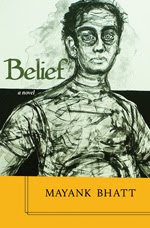After a long wait, when an immigrant family finally lands at Toronto’s Lester B Pearson Airport and gets the landing papers stamped, a friendly immigration officer hands over a bag to the family. The bag has papers and books that will help the family to settle quickly in their new home country. “Welcome to Canada,” the officer says, flashing a smile.
The package doesn’t include Michael Ondaatje’s In the Skin of a Lion. It should.
In the last year or so, I’ve been educating myself in Canadian literature and have read a few Canadian writers. All of them – without exception – are extraordinarily felicitous in both style and storytelling.
I didn’t, however, read anything that I found unsettling until I read In the Skin of a Lion.
Ondaatje wrote this masterpiece of a novel more than two decades ago and it describes the situation of immigrants in the early 20th century.
I daresay in 2009, the conditions aren’t too different.
The book is unsettling especially for a newcomer because she will instantly identify with many of the novel’s faceless and unacknowledged immigrants that helped build Toronto.
She’s doing so today, in a different context, but in no less an important way.
Undoubtedly, Toronto and Canada have changed beyond recognition since the days the Bloor Viaduct was built.
I wouldn’t be committing a multicultural blasphemy when I say that despite all the progress, the newcomer continues to remain faceless, unseen, invisible and unacknowledged.
The fine irony is that our society still needs newcomers as desperately today as it did eight decades ago.
Appallingly, it continues to have the same disdain for the immigrant now as it had then.
Let me hasten to add that in today’s Canada, most immigrants meet more people who are like Ondaatje’s protagonist – Patrick Lewis.
However, that doesn’t take away the sense of immense hurt that newcomers experience when they’re unfairly set aside merely because they look different, speak the same language differently and eat different food, or don’t eat the same food.
Ironically, this is done in the name of trying to build a society that is based upon Canadian values.
Those who do this forget that the newcomer believe more in those “Canadian values” than home grown Canadians.
An immigrant votes with her feet to come to this land. The home grown Canadian doesn’t even go to vote in an election.
The Skin of a Lion is a story of the building of the Bloor Viaduct. It’s the story of one man’s vision (arrogance) to build urban monuments.
Rowland Harris’s vision, he pleads with Patrick Lewis, is to build something, that would make people gape in wonder. “You watch, in fifty years they’re going to come here and gape at the herringbone and the copper roofs. We need excess, something to live up to.”
More importantly, it’s the story of Nicholas Temelcoff, the daredevil builder, who undertakes death-defying tasks with ease and equanimity only because he want to (and does) start his own bakery.
It’s a story of Clara and Alice, two friends who are so similar because of their circumstances, but so different because of their convictions.
It’s a story of Caravaggio, who paints himself in ‘aquamarine’ to escape prison – as lovable and notorious as the Italian renaissance painter of the same name.
It’s a story of Ambrose Small, the buccaneer capitalist and above all, it’s the story of Patrick Hey Canada! Lewis, the only insider condemned to remain an outsider.
It’s also, equally, a story of the haves and the have-nots, and the strong arm of the state – issues that are as pertinent to our society today as it was in the early 20th century.
Urban development is masculine. Building bridges, water purification reservoirs, dynamiting lumber, rescuing cows from freezing waters is the work of men. Ondaatje plays up this masculinity deliberately, only to show later on almost every occasion that the masculinity is so hollow.
And it’s written as a mystery – a complex jigsaw puzzle that will fall into place only when the reader and the writer work in unison to put all the pieces together.
It’s been a great experience reading the book. My friend Myrna Freedman has lent me The English Patient, which is a sequel to In the Skin of a Lion.
Images: Bloor Viaduct: http://heatherwilliams.files.wordpress.com/2008/10/bloor-viaduct-1916.jpg
MO: http://www.bookforum.com/uploads/upload.000/id00263/article00.jpg











